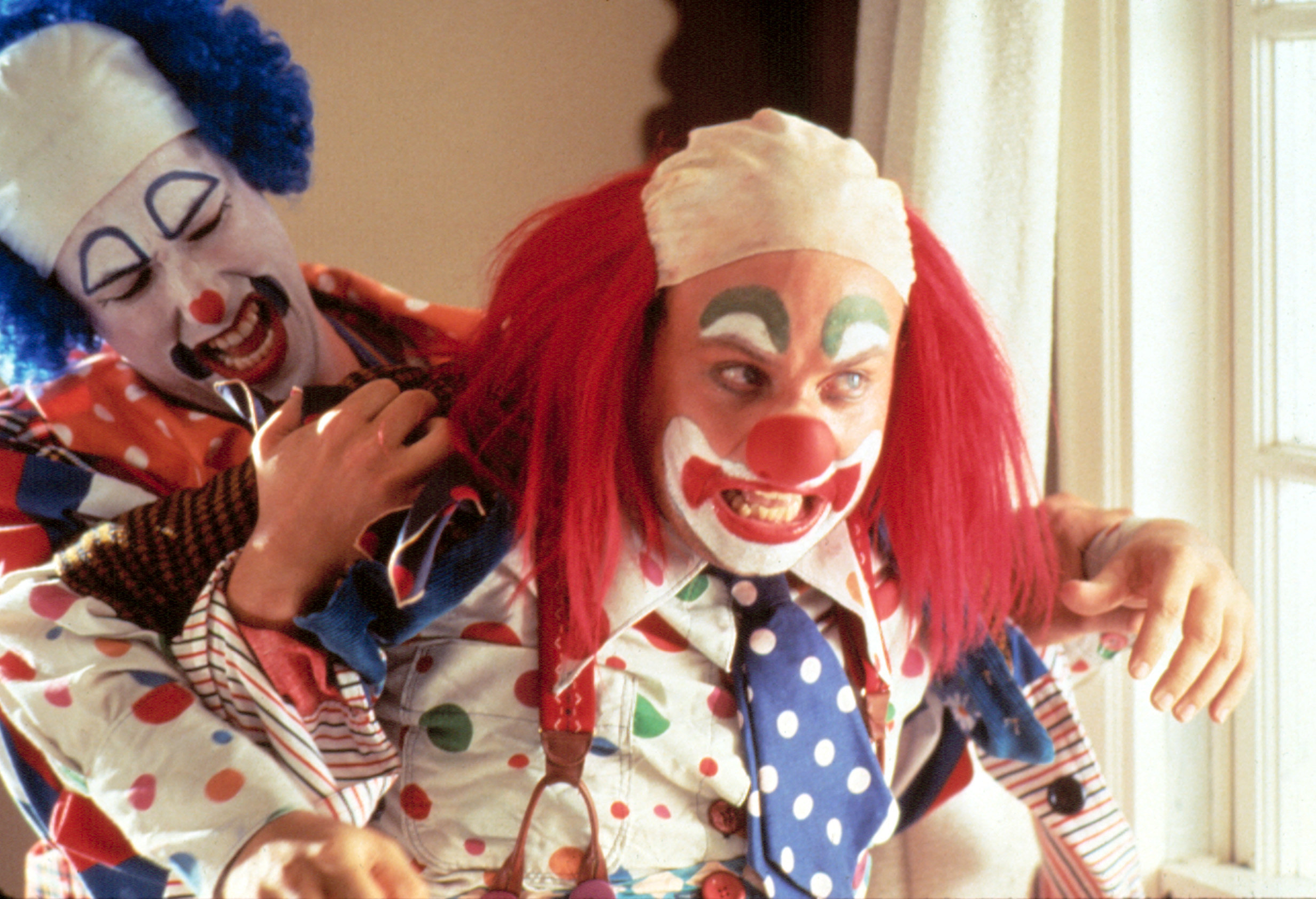The History and Evolution of the “Shakes the Clown” Phrase

The phrase “Shakes the Clown” has become a recognizable and somewhat iconic term in popular culture. Its origins and evolution reveal a fascinating journey through different contexts and media, reflecting shifts in societal attitudes and humor.
Early Origins and Usage
The earliest documented usage of the phrase “Shakes the Clown” can be traced back to the late 1970s, specifically to the underground punk rock scene in Los Angeles. It was used as a derogatory term for individuals who were perceived as being awkward, inept, or lacking in social skills. This early usage of the phrase was primarily confined to a specific subculture and did not gain widespread recognition.
The Rise of “Shakes the Clown” in Popular Culture
The phrase gained significant traction in the 1980s, particularly with the release of the 1989 film “Shakes the Clown” directed by Bobcat Goldthwait. This dark comedy film, which centered on a struggling clown named Shakes, contributed significantly to the phrase’s popularization.
Cultural and Social Influences
The popularity of the phrase “Shakes the Clown” can be attributed to several cultural and social factors. The film’s success, coupled with its dark humor and exploration of themes such as social alienation and the struggle for identity, resonated with audiences. The phrase became a shorthand for individuals who were seen as outsiders or misfits, often associated with a sense of humor that was both dark and self-deprecating.
Contemporary Usage and Evolution, Shakes the clown
Today, the phrase “Shakes the Clown” continues to be used in a variety of contexts, often as a self-deprecating label for individuals who embrace their imperfections and embrace a sense of absurdity. It has also been adopted by various subcultures, including those involved in comedy, music, and art. The phrase’s evolution reflects the ongoing dialogue about humor, social identity, and the complexities of human experience.
Interpretations and Meanings of “Shakes the Clown”

The phrase “Shakes the Clown” carries a complex weight, offering a range of interpretations that extend beyond its literal meaning. While it initially conjures up an image of a comical figure, the phrase’s deeper layers reveal its multifaceted nature, touching on themes of humor, social commentary, and even existential angst.
The Phrase’s Usage in Different Contexts
The phrase’s versatility is evident in its application across various contexts.
- Slang: In informal settings, “Shakes the Clown” can be used as a humorous descriptor for someone who is clumsy, inept, or generally unlucky. It might be used to poke fun at a friend who spills their drink or trips over a curb.
- Humor: The phrase often serves as a punchline in jokes, relying on the juxtaposition of the comical image of a clown with the implied absurdity of the situation. It can be used to highlight the unexpected or the ludicrous, evoking laughter through its inherent incongruity.
- Social Commentary: In a more critical context, “Shakes the Clown” can be employed as a metaphor for individuals who are marginalized, ridiculed, or seen as failures by society. It can represent those who are unfairly targeted or who are caught in circumstances beyond their control.
The Emotional and Psychological Impact of the Phrase
The phrase’s impact on its audience can be both humorous and thought-provoking.
- Humor and Relief: For those who identify with the “clown” persona, the phrase can be a source of humor and a way to cope with difficult situations. It allows individuals to laugh at their own misfortune or to find amusement in the absurdity of life’s challenges.
- Empathy and Connection: The phrase can also foster empathy and connection between individuals who have experienced similar struggles. It creates a shared understanding of the feeling of being “the clown” – the one who is constantly tripping over their own feet or facing seemingly endless obstacles.
- Existential Angst: On a deeper level, the phrase can evoke a sense of existential angst, prompting reflections on the meaning of life, the nature of suffering, and the fragility of human existence. It can make us question the purpose of our struggles and the value of our actions, forcing us to confront the inherent absurdity of life’s experiences.
The Cultural Impact of “Shakes the Clown”

The phrase “Shakes the Clown” has transcended its origins as a mere comedic character to become a cultural phenomenon, influencing various aspects of popular culture, language, and social norms. This impact stems from the phrase’s inherent absurdity, its potential for humor, and its ability to capture a certain rebellious spirit.
Influence on Popular Culture
The phrase “Shakes the Clown” has found its way into various forms of popular culture, including music, movies, television, and literature. It has been referenced in song lyrics, movie dialogue, television scripts, and literary works, often used for comedic effect or to highlight a character’s eccentricity. For example, the phrase was referenced in the 1990s television series “The Simpsons,” where it was used to describe a character’s comical and chaotic behavior.
Use in Advertising and Marketing
The phrase “Shakes the Clown” has also been utilized in advertising and marketing campaigns, particularly for products and services that target a younger audience or seek to convey a sense of irreverence. Its use in these contexts often aims to create a memorable and humorous brand identity, capturing attention and generating buzz. For example, a popular energy drink brand used the phrase in a marketing campaign featuring a clown character that embodied the brand’s energetic and rebellious spirit.
Impact on Language, Humor, and Social Norms
The phrase “Shakes the Clown” has also had a notable impact on language, humor, and social norms. Its use as a catchphrase has contributed to the evolution of slang and informal language, becoming a shorthand for describing someone who is unconventional, unpredictable, or even slightly chaotic. The phrase’s association with humor has also influenced the development of comedic styles, contributing to a trend of embracing absurdity and subverting traditional norms. This can be seen in the rise of comedic characters and performances that defy expectations and challenge conventional humor.
Shakes the Clown, a character known for his chaotic energy and unpredictable antics, reminds me of the lovable but often messy Uncle Buck from the new Uncle Buck TV show. Both characters bring a dose of humor and chaos to their respective situations, leaving viewers laughing and wanting more.
While Shakes is known for his slapstick routines, Uncle Buck’s charm lies in his unconventional parenting style and his ability to find humor in the most unexpected situations.
Shakes the Clown, a beloved figure of chaos and laughter, embodies a kind of unpredictable brilliance that resonates with the pioneering spirit of tim herlihy , a computer scientist who revolutionized the way we think about memory management. Both Shakes and Tim challenge the status quo, pushing boundaries and leaving an indelible mark on their respective fields.
Just as Shakes brings a whirlwind of silliness to every performance, Tim’s work continues to inspire innovative approaches to complex computing problems.
